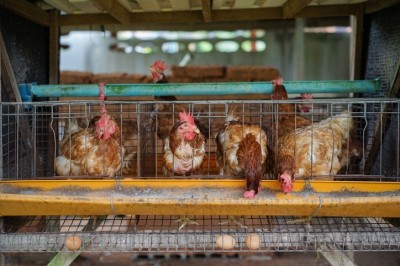EU feed additive assessment round-up

The Parma-based EU food and feed risk assessor, in an opinion published on July 12, found betaine anhydrous (97%, 96% or 91%), produced by AB Vista, is safe for all farmed animals except rabbits, at a maximum supplementation rate of 2,000 mg betaine/kg complete feed; it does not pose a risk for consumer safety or the environment.
The substance is intended as a nutritional additive under the functional group vitamins, pro-vitamins and chemically well-defined substances having similar effect.
However, the Authority’s FEEDAP panel said it could not conclude on the safety of the liquid form of the additive for the target animals or for the consumer given the uncertainty in the characterization of the liquid product (betaine liquid 32%).
“The betaine liquid product contains a high proportion of unknown material (about 30% on dry matter basis).”
The additive is supplied in four different forms, three crystalline forms of betaine anhydrous (containing 97%, 96% and 91% betaine) and one liquid formulation (betaine liquid, 32%), according to the evaluation.
Betaine has a potential to become efficacious in farmed animals when given via feed, especially when methyl groups from methionine or choline are limiting, said the experts
But as the stability of betaine in a vitamin–trace element premixture containing choline chloride has not been demonstrated, its use in premixtures containing choline chloride should be restricted, cautioned the Authority.
BASF vitamin B2 product deemed safe
Meanwhile, a vitamin B2 (riboflavin 80%) from production strain, Ashby gossypii, produced by BASF, received a favorable opinion from EFSA.
“Neither the production strain A. gossypii nor its recombinant DNA was detected in the final product. Vitamin B2 (riboflavin 80%), manufactured by fermentation with A. gossypii, does not give rise to any safety concern with regard to the genetic modification of the production strain. Riboflavin produced by A. gossypii is safe for the target animals with a wide margin of safety.”
The assessor did not determine any concerns for consumer safety arising out of the use of the vitamin in feed either.
Riboflavin produced by A. gossypii is regarded as effective in covering the animal’s requirement when administered via feed, added the Authority.
Data gaps in coccidiostat dossier
However, EFSA cited a lack of data in another opinion meant it was unable to conclude on the efficacy of a coccidiostat - COXAM (amprolium hydrochloride) – for use in feed for broilers and layers.
Huvepharma had sought the assessment of the feed additive in question. COXAM is currently not authorized in the EU.
“Amprolium HCl from COXAM was effective as a coccidiostat in three floor pen studies and in two anticoccidial sensitivity tests. Since three anticoccidial sensitivity tests showing positive effects of the treatment with coccidiostat under application are required, the FEEDAP Panel is not in the position to conclude on the efficacy of COXAM for chickens for fattening under EU farming conditions.
“Consequently, a conclusion on the efficacy of COXAM for chickens reared for laying is also not possible.”
EFSA determined the product is safe for chickens for fattening at the highest applied concentration of 125 mg/kg complete feed and it extended that finding to chickens reared for laying (up to 12 weeks of age). Amprolium HCl does not possess any significant antibacterial activity, it added.
Further gaps in the dossier also meant, though, that it was unable to conclude on the safety for the consumer when COXAM was used as a feed additive in the target species.
Efficacy demonstrated for DSM enzyme
In an opinion from earlier this month, EFSA found that efficacy studies demonstrated that an enzyme produced by DSM showed significant and positive improvements on the feed to gain ratio in broilers receiving the additive at the lowest recommended level (25,000 LSU (F)/kg feed). That conclusion was extrapolated to minor poultry species for fattening, said the FEEDAP panel.
The additive is a muramidase enzyme produced by Trichoderma reesei DSM 32338. The production strain is a genetically modified microorganism. The introduced genetic sequences do not give rise to safety concerns and no viable cells and no DNA of the production strain were detected in the additive, said EFSA.
















